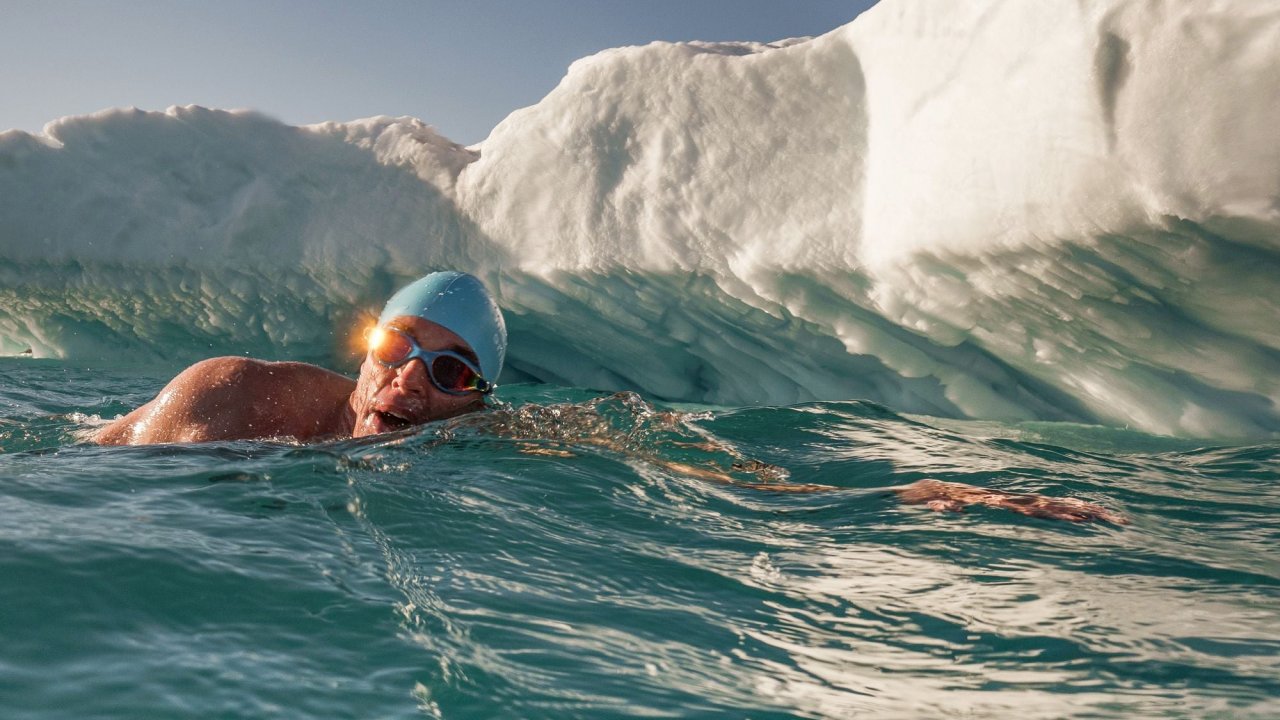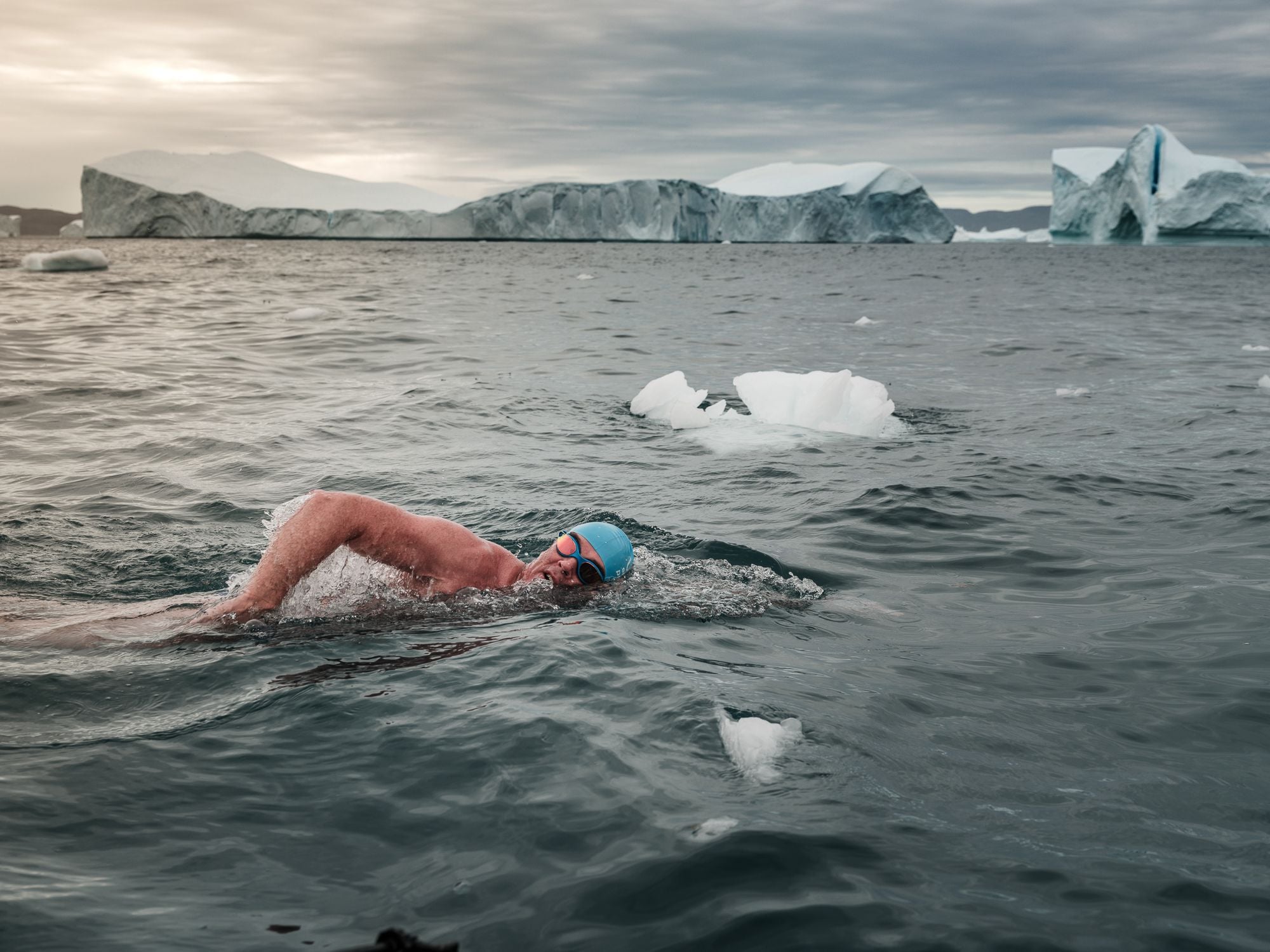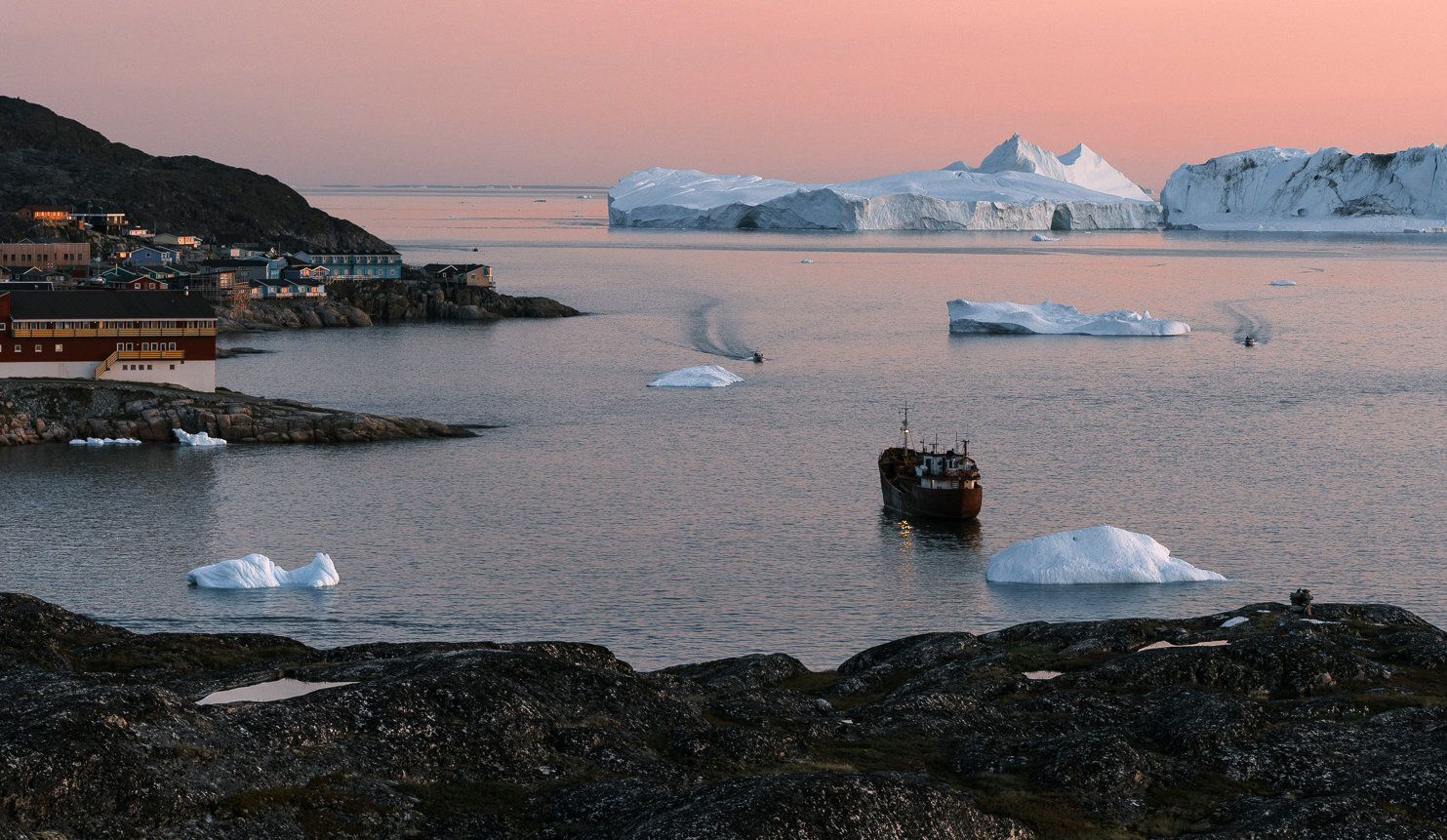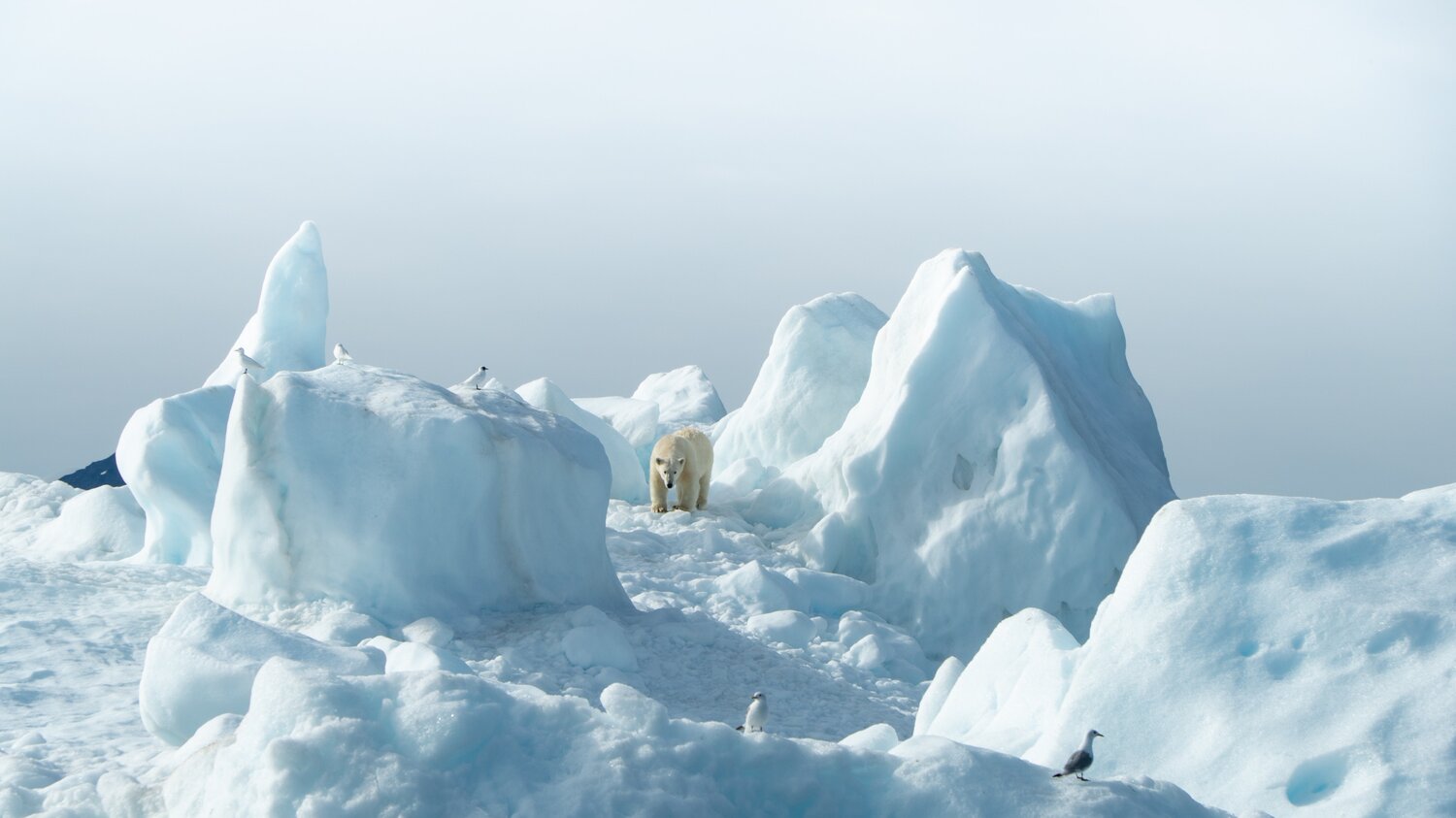
British-South African endurance swimmer and ocean advocate Lewis Pugh put his life on the line by swimming across the Ilulissat Icefjord in Greenland, to highlight the impacts of climate warming in the polar regions.
Lewis Pugh Attempts The Coldest Swim on Earth
This month, British-South African endurance swimmer and ocean advocate Lewis Pugh undertook the most challenging swim of his career as he set out to swim across the mouth of Greenland’s Ilulissat Icefjord, which is fed by the world’s fastest-moving glacier. The swim is expected to take two weeks and will be the first multi-day Polar Swim ever attempted. Lewis will end the gruelling challenge in Ilulissat, in the lead up to UN Climate Conference (COP26) in Glasgow, because there is no better place to illustrate the scale and pace of the Climate Crisis. “No ice, no life.” — *UPDATE BELOW*

Why there?
The Ilulissat Glacier, a UNESCO World Heritage Site, is the world’s fastest moving glacier. It moves at an average of 30m per day. Due to its sheer size and speed, it is one of the most studied glaciers in the world – legend has it that the Ilulissat Glacier calved the iceberg that sank the Titanic.
Currently, the glacier discharges around 30 cubic kilometres of ice per year into the sea. Now, due to warming air and ocean temperatures, the glacier is melting at an accelerating scale and pace. If the entire Greenland Ice Sheet were to melt, it would lead to a global sea level rise of over seven metres.
Any sea-level rise will be devastating, with one billion people living less than 10 metres above sea level, and around 230 million within one metre. This includes those living in London, Tokyo and New York.
There is no better place in the world than Ilulissat to show the dramatic impact of the Climate Crisis. This is ground zero. This is why Lewis has chosen to swim across the Ilulissat Icefjord.
Source : LewisPughFoundation

But why now?
This year is crucial for our climate and our future. In November, the world is heading to Glasgow for the UN Climate Conference (COP26) to make critical decisions that will affect all of us.
To highlight the impacts of climate warming in the polar regions, Lewis will once again put his life on the line to alert world leaders through graphic images that show the Climate Crisis in action. As UN Patron of the Oceans, Lewis will also stress the role healthy oceans play in mitigating against climate change, by calling for 30% of the world’s oceans to be protected.
Source : LewisPughFoundation

The significance of the Ilulisat Glacier
For the past few centuries the Ilulisat Glacier has highlighted the devastating impact of atmospheric and ocean warming in the Arctic and developed our understanding of how glaciers are responding to climate change.
The glacier lies south of Ilulissat on the west coast of Greenland, 250 km north of the Arctic Circle. The glacier drains 6.5% of the Greenland ice-sheet into the Ilulisat Icefjord and produces around 10% of all Greenland’s icebergs – including, legend has it, the one that sank the Titanic.
It is the fastest and largest glacier (by discharge) in Greenland. Some of the icebergs breaking from the glacier are over one kilometre tall and several kilometres wide.
At its terminus the Illulissat Glacier currently flows at about 30 m per day, but it flows even faster in the summer. In 2004 the Ilulissat Iceford was declared a UNESCO World Heritage Site.
Source : LewisPughFoundation.org
Greenland Ice Sheet Facts
• Second largest ice mass in the world, after the Antarctic Ice Sheet;
• 2,900 km long, 1,100 km wide;
• Over 3 km thick in places;
• 2,850,000 cubic kilometres of ice;
• lost almost 4,000 billion tonnes of ice between 1992 and 2018, causing the global mean sea level to rise by almost 11 mm.
Source : LewisPughFoundation.org
*update* Pugh completes multi-day icy Greenland swim to highlight climate crisis
Endurance swimmer Lewis Pugh has completed the most challenging swim of his career in Greenland to highlight the impacts of the climate crisis. Swimming in waters fed by the world’s fastest moving glacier, the UN patron of the oceans had to brave water temperatures between 0C and 3C (32F-37.4F) as he became the first person to undertake a multi-day swim in the polar regions.
He said: “This was an extremely challenging swim. Not only because of the cold, and not just because I had to swim in freezing water day after day, without a chance to let my body recover, but because the conditions were also very treacherous.”
“The reason why I did this swim is clear: we rely on ice for our survival. Ice keeps our planet cool enough for us to live. But we are losing it fast. No ice, no life.”
“We have seen so many natural disasters this year – from wildfires in Greece, to floods in Germany, extreme snowstorms in Texas, but I want also everyone to be aware of what is happening here in the Arctic.”
“Last month was the first time in recorded history that it rained at the highest point on the Greenland ice sheet. The melt is accelerating.
“I watched water gushing off the ice sheet at a location that, only a few years ago, was covered in hundreds of metres of ice. I also witnessed shocking quantities of ice being pushed through my swim route and far out to sea.”
Mr Pugh will take his call for action to the UN Cop26 climate conference in Glasgow in November, highlighting the role healthy oceans play in tackling climate change and calling on world leaders to protect 30 per cent of seas by 2030.
He warned: “Unless we take urgent action to decrease global temperatures by seriously lowering our global carbon dioxide emissions, low-lying islands and coastal cities will, quite literally, drown.”
Source: TheIndependent
Follow Lewis on the coldest swim on earth
You can follow Lewis’s day-to-day progress and get lots more details at his website, or on Facebook, where you will find more stunning photos and videos of the Arctic.
30x30 CALL FOR ACTION
Join the LewisPughFoundation’s call to protect 30% of the world's oceans by 2030. Click to learn more.